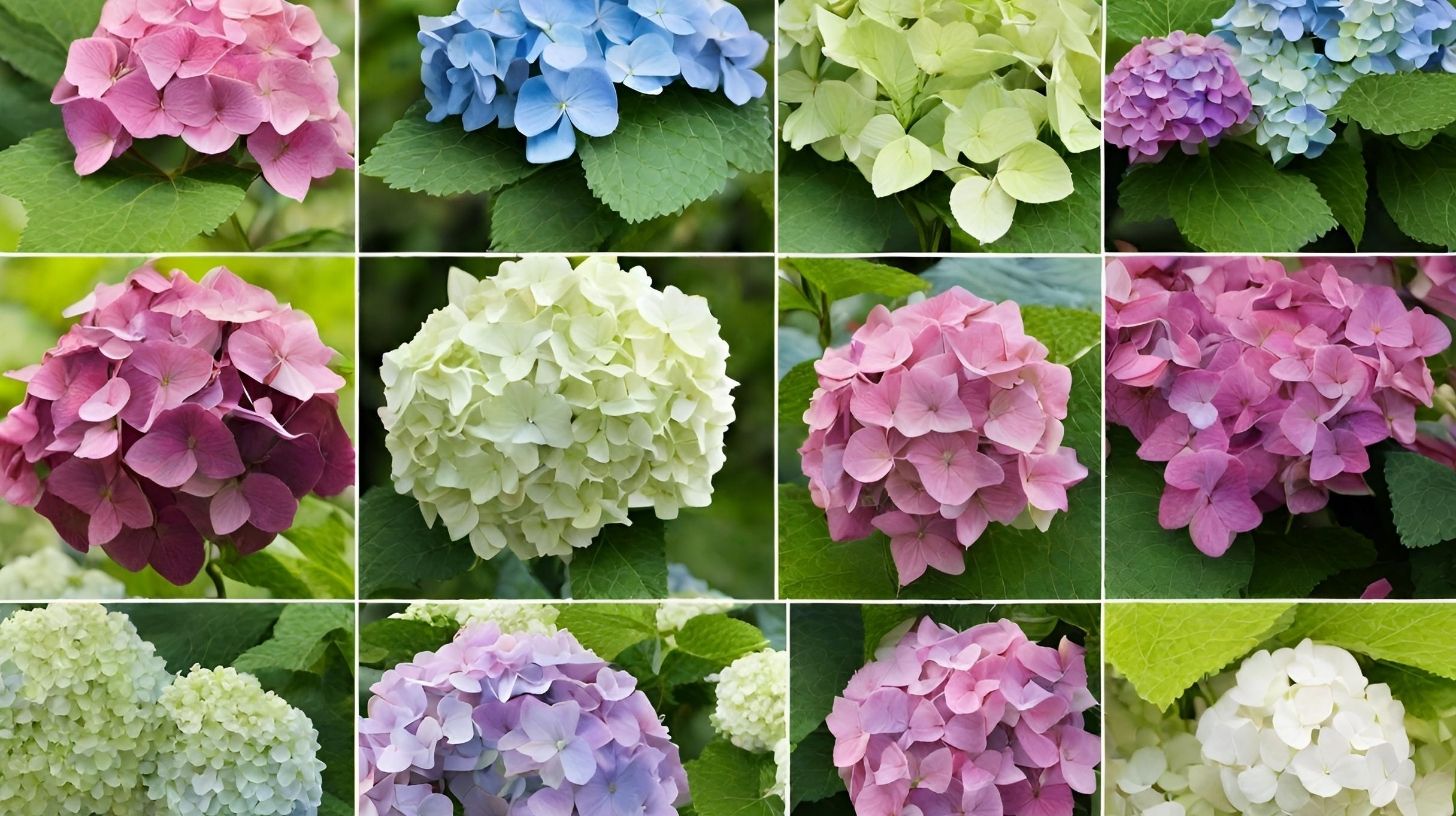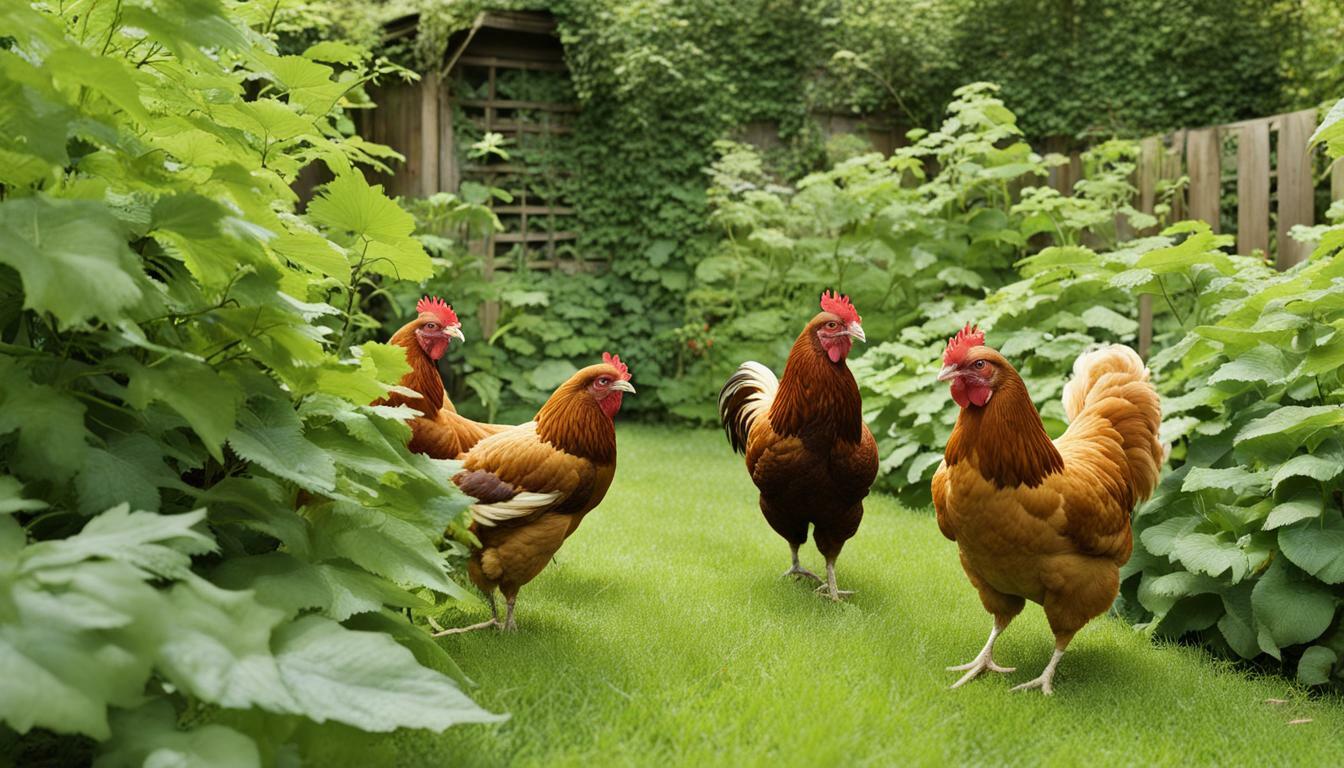Are Hydrangeas Toxic or Safe for Backyard Chickens?

Table of content:
Hydrangeas are a popular landscaping plant thanks to their big, showy blooms that come in shades of pink, blue, purple, white and green. But if you have backyard chickens, you may be wondering if these beautiful bushes pose a risk. Can chickens eat hydrangeas safely?
The short answer is no, chickens should not eat hydrangeas. All parts of the hydrangea contain cyanogenic glycosides which release cyanide when ingested. The levels are highest in young leaves and wilting blooms. Consuming small amounts of hydrangeas is unlikely to poison a chicken, but it’s best not to let them forage these flowering shrubs to avoid potential health problems.
Key Takeaways:
- Hydrangeas contain cyanogenic glycosides which can be toxic to chickens if consumed in large quantities.
- Small amounts of hydrangeas are unlikely to cause major health issues, but it’s best to keep chickens away from hydrangeas as a precaution.
- There are safer, healthier alternatives to hydrangeas such as leafy greens, vegetable scraps, bugs, and chicken feed.
- Protect hydrangeas in your garden by fencing them off or placing chicken wire beneath bushes.
- Learn to identify hydrangeas and properly care for these popular ornamental plants.
Below we’ll cover everything you need to know about chickens and hydrangeas, from toxicity levels to identification, care tips and safer alternatives for your flock.
 Are Hydrangeas Toxic to Chickens?
Are Hydrangeas Toxic to Chickens?
Hydrangeas contain a naturally occurring cyanide compound that helps defend the plant against predators. The stems, leaves, buds and flowers of hydrangeas all contain these toxic cyanogenic glycosides.
When chickens eat hydrangea parts, enzymes in their digestive system break down the glycosides and release hydrogen cyanide. Consuming small quantities is unlikely to cause serious issues beyond gastrointestinal upset.
However, eating larger amounts of hydrangeas can potentially cause:
- Breathing difficulties
- Trembling and muscle spasms
- Falling or lack of coordination
- Dilated pupils
- Convulsions
- Increased heart rate
- Collapse and sudden death
Younger, more tender leaves tend to be higher in toxins. Wilting or damaged blooms also have higher cyanide levels.
So while a few curious pecks likely won’t harm a chicken, it’s best not to give them access to hydrangeas to avoid accidental poisoning. We’ll cover steps to chicken-proof your landscaping below.
Identifying Hydrangeas
There are several popular types of hydrangeas grown in home gardens. Learning to identify them will help you protect your flock. Here are the most common:
Bigleaf Hydrangea
This is the most popular hydrangea shrub with its huge, showy blossoms. Bigleaf hydrangeas (Hydrangea macrophylla) have:
- Large, rounded flowers up to 8 inches wide
- Typically pink or blue blooms (depending on soil pH)
- Heart-shaped, toothed leaves 4-6 inches long
- Grows 3-6 feet tall and wide
Panicle Hydrangea
Panicle hydrangeas (Hydrangea paniculata) are named for their cone-shaped flower clusters. They are identified by:
- Large, conical flower clusters 6-12 inches long
- Blooms are typically white, turning pinkish with age
- Leaves have a coarse, toothed texture
- Grows 8-15 feet tall
Smooth Hydrangea
Smooth hydrangeas (Hydrangea arborescens) have a wild, informal look with their rounded form and small-to-medium blooms. Features include:
- Rounded, dome-shaped flowers 3-6 inches wide
- White blooms, sometimes with green or pink hues
- Smaller shrub, grows 3-5 feet tall and wide
- Smooth-edged, oval leaves
Oakleaf Hydrangea
Oakleaf hydrangeas (Hydrangea quercifolia) are named for their leaf shape which resembles oak leaves. Identifying features:
- Pyramidal flower clusters 6-12 inches long
- White blooms aging to pink or purple
- Distinctive lobed, oak-shaped leaves
- Grows 6-8 feet tall and wide
Climbing Hydrangea
As the name suggests, climbing hydrangea (Hydrangea anomala) is a woody vine that climbs up structures with aerial rootlets. It has:
- Lacy, flat-topped flower clusters up to 10 inches wide
- White blooms in early summer
- Glossy, heart-shaped leaves
- Can grow up to 80 feet long
Now that you know how to identify hydrangeas, let’s go over proper care and how to protect them from foraging chickens.
Caring for Hydrangeas
Hydrangeas thrive in consistently moist, fertile soil and partial shade. Follow these tips for growing happy, healthy bushes:
- Plant in spring or fall – Avoid summer planting when heat stress can damage young plants.
- Choose a site with morning sun + afternoon shade – At least 4 hours of sun daily helps hydrangeas bloom strongly. Afternoon shade prevents wilting.
- Space plants 3-6 feet apart – Give them room to reach full size. Plant smaller varieties like smooth hydrangea closer together.
- Prepare soil well – Improve native soil with compost or peat moss to retain moisture. Hydrangeas have shallow roots.
- Water 1-2 times weekly – Soak the soil thoroughly during droughts. Add mulch to help retain moisture.
- Prune selectively – Remove dead stems annually. Occasionally prune to shape, but never excessively as blooms form on old wood.
- Protect from wind – Add stakes or build a shelter to prevent damage to brittle stems.
Follow these tips and your hydrangeas will thrive, lighting up your landscape with their gorgeous blooms. Just be sure to also take steps to protect them from curious chickens!
 Are Hydrangeas Poisonous to Chickens? How to Protect Your Plants
Are Hydrangeas Poisonous to Chickens? How to Protect Your Plants
Since all parts of the hydrangea plant contain toxic compounds, it’s important not to let chickens freely forage shrubs. Here are some tips to safely coexist with chickens:
- Fence around hydrangeas – Install temporary fencing to create a barrier and prevent access by chickens. Chicken wire or hardware cloth works well.
- Use chicken wire beneath plants – Place wire 2-3 inches below mulch or soil to block chickens from scratching around plant bases.
- Move potted hydrangeas – Place containers on elevated surfaces like decks or porches to keep them safely out of reach.
- Supervise flock – If free-ranging chickens, stay outside with them to shoo away from landscaping.
- Remove fallen blooms – Routinely clean up debris that chickens could eat.
- Offer alternatives – Provide leafy greens, vegetable scraps and treats to distract from nibbling toxic plants.
With some simple precautions, you can have both vibrant hydrangeas and healthy, happy chickens. It just takes a bit of planning and training to safely manage your flock.
Healthy Alternatives for Chickens
Chickens shouldn’t be fed a diet solely of chicken feed. They benefit from diverse forage including leafy greens, vegetable scraps, and insects. Here are some of the top healthy, non-toxic foods for chickens:
Leafy Greens
- Lettuce
- Kale
- Spinach
- Chard
- Clover
- Alfalfa
Vegetable Scraps
- Squash
- Broccoli stalks
- carrot tops
- Beet greens
- Cucumbers
Fruits
- Tomatoes
- Berries
- Melon rinds
- Apple cores
Protein Sources
- Mealworms
- Black soldier fly larvae
- Crickets
This variety keeps chickens engaged and provides enrichment. Chickens that have ample alternatives are less likely to peck at toxic temptations like hydrangeas.
Frequently Asked Questions
Are chickens attracted to hydrangeas?
Chickens are naturally curious and will explore and peck new items in their environment. They may nibble hydrangeas out of curiosity. Chickens also forage and scratch to find food. This rooting behavior can damage plants like hydrangeas as chickens search for insects and other edibles in the soil around plant bases.
What if my chicken eats hydrangea?
If you witness a chicken eating parts of a hydrangea plant, keep a close eye on them for signs of poisoning, including breathing issues, tremors, dilated pupils and coordination problems. Make sure they have access to fresh water. Call your vet if symptoms persist or seem severe.
Are other plants toxic to chickens?
Yes, many common garden plants can pose a risk to chickens if eaten. Other toxic specimens include lilies, azaleas, clematis, foxglove, larkspur, lobelia, rhododendron and rhubarb leaves. Know what’s growing in your yard and take steps to limit access. When in doubt, fence it off!
Can dried hydrangea flowers be used in chicken coops?
While dried hydrangea blooms are safer than fresh plant parts, it’s still best not to use them as chicken coop decor. Chickens may still nibble out of curiosity. The dust from dried flowers could also pose a respiratory risk if inhaled. There are many safer, non-toxic plant materials to use for coops.
Will hydrangeas regrow if a chicken damages them?
It depends on the extent of the damage. Light nibbling or superficial scratching may only cause minimal harm. But chickens repeatedly eating new growth or damaging stems can kill sections of the plant or entire young shrubs. Protecting hydrangeas from the start is key.
Conclusion
Hydrangeas add incredible beauty to gardens but require some precautions with backyard chicken flocks. While a few curious pecks likely won’t cause major issues, it’s smart to avoid letting chickens freely access these flowering shrubs since all parts contain cyanide compounds.
With proper barriers like fencing and chicken wire, plus ample foraging alternatives, you can safely manage chickens while enjoying vibrant hydrangea blooms.
Get to know common types of hydrangeas, follow care tips to keep them thriving, and take preventative steps to protect plants from chickens. A bit of planning helps ensure a safe, healthy environment for both your flock and your landscape.
Welcome. I’m Adreena Shanum, the proud owner of this website, and I am incredibly passionate about animals, especially poultry. I founded adreenapets.com as a labor of love, stemming from my desire to share my knowledge and experiences with poultry enthusiasts worldwide.




